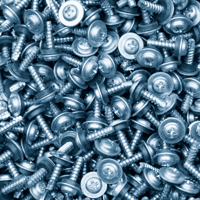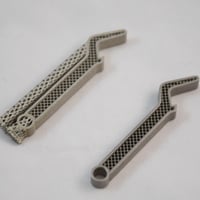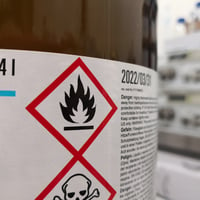Tips for Washing Parts Machined in Oil
Before a part is treated, inspected or added to an assembly, it must first be thoroughly cleaned of debris, oil and other residue left behind from the machining process. How you approach this stage can greatly influence how much money and effort is spent on the cleaning process. The key factors in an effective and safe parts-washing operation include the washing chemistry, the complexity of your parts and the quality and sustainability of your process.
Break down oil with solvents
 The best way to break down oil is with oil-based solvents. For an aqueous washer to successfully flush debris and contaminants, additional chemistries must be added to the solution, which tends to result in residue and scum build-up, adding more manual work to the cleaning process and continuous maintenance of the machine.
The best way to break down oil is with oil-based solvents. For an aqueous washer to successfully flush debris and contaminants, additional chemistries must be added to the solution, which tends to result in residue and scum build-up, adding more manual work to the cleaning process and continuous maintenance of the machine.
The most common types of solvent washers found on a production floor are vapor and manual degreasers and vacuum chamber parts washers.
Manual Degreasers
Manual degreasers are wash stations for low volumes where operators individually clean each part in a solvent. Even though manual parts washing can appear out-of-date, there may be certain situations that deem it necessary, but this is a tedious, labor-intensive option. Methods of manual washing include soaking, brushing, heating and fluid agitation.
Vapor Degreasers
Conventional vapor degreasers are “open atmosphere” systems in which parts are suspended above solvent vapor and/or immersed in the solvent. The chemicals in the solvent clean metal pieces by dissolving the soils on the parts. Cooling coils condense the vaporized solvent for return to the solvent tank.
Vacuum Parts Washers
Vacuum parts washers are fully self-contained, airtight cleaning systems, performing all washing and drying under vacuum and assuring the highest environmental and cleanliness standards. Vacuum parts washers such as iFP can eliminate the use of water and all the related support equipment, consumable chemistry, monitoring, mixing and disposal.
Tackle parts with challenging geometries
Challenging parts can prevent the solvent from flushing hard-to-reach areas in the part, such as blind or tapped holes, leaving contaminants behind. If a part requires multiple cycles to fully clean it, your solution may need to be revised.
 Manually washing parts with complex geometries can prove inefficacious, because your operator may be ill-equipped to handle a particular part shape. The more challenging a part, the longer it will likely take to fully clear away every contaminant. This solution can take as long as 45 minutes for a low-volume cycle.
Manually washing parts with complex geometries can prove inefficacious, because your operator may be ill-equipped to handle a particular part shape. The more challenging a part, the longer it will likely take to fully clear away every contaminant. This solution can take as long as 45 minutes for a low-volume cycle.
One way to circumvent a lack of reach is to utilize ultrasonics as a part of the process. In ultrasonic cleaning, transducers generate vibrations in the liquids containing immersed parts. These vibrations act as a sort of “scrub brush,” reaching the surface of any crevice or hole and breaking up even tougher soils.
iFP machines operate under vacuum, which removes air bubbles that may trap soils and protect them from being purged from the part. iFP machines constantly recycle solvent and come equipped with ultrasonics, making iFP an automatic parts-washing solution that can flush even the most difficult part geometries with ease. These characteristics allow for the complete cleaning of any part to be finished much quicker than with the other degreaser types, with cycle times averaging 8-15 minutes.
Avoid hazardous chemistry
 Manual and vapor degreasers tend to utilize solvent that contains toxic chemicals, such as trichloroethylene (TCE), since these chemicals can effectively break down the oils and debris on the metal parts. Since these chemicals can be hazardous to humans, extra safety is required when handling them, and that may not be enough.
Manual and vapor degreasers tend to utilize solvent that contains toxic chemicals, such as trichloroethylene (TCE), since these chemicals can effectively break down the oils and debris on the metal parts. Since these chemicals can be hazardous to humans, extra safety is required when handling them, and that may not be enough.
A new Minnesota law prohibits the use of TCE after June 1, 2022, and this may spread as more states adopt this stance. Other traditional parts-cleaning solvents being reviewed by the EPA include methylene chloride and 1-bromopropane. It may be time to consider a greener alternative, such as the biodegradable modified alcohol we use in our systems.
KYZEN Metalnox M6386 is a non-hazardous organic solvent that is RoHS compliant, CFC-free, Halogen-free, Reach complaint and non-flammable.
Pick a strong team
iFP and KYZEN make a great team that will eliminate concerns raised by conventional degreasers, including air quality, hazardous chemistry and solvent consumption. If you have any questions about how iFP and KYZEN can improve your parts-washing process, contact an iFP representative today!

